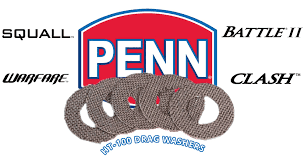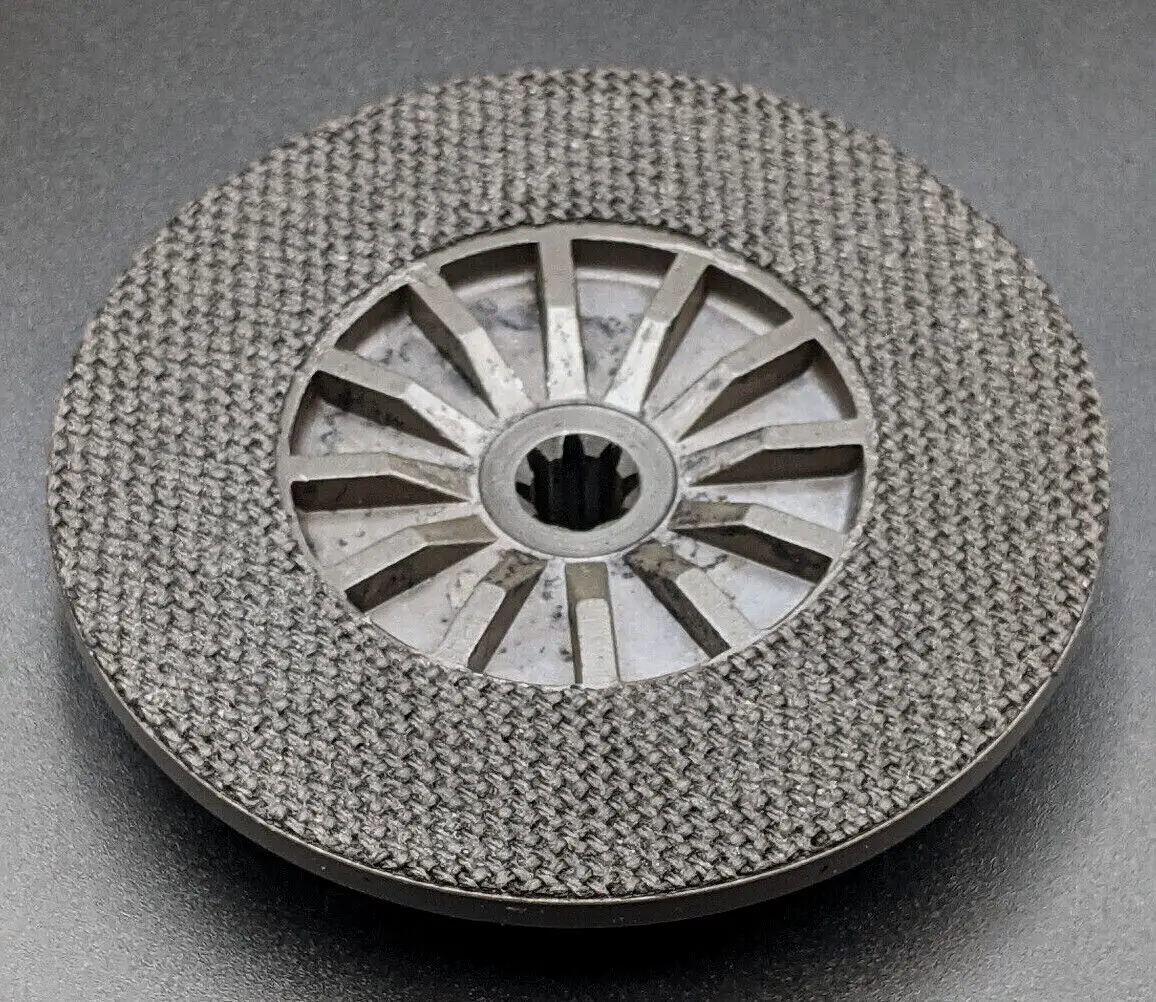HT-100 drag washers are a carbon fiber drag washer technology developed by Penn and rigorously tested by running 100 miles of mono fishing line through them.
They have successfully upgraded the drag system and have been implemented in all of Penn’s modern spinning reels.
Penn fishing reels are widely recognized as some of the highest quality products in today’s fishing industry. There are a number of reasons why Penn reels are considered to be a-cut-above the competition in many ways. Many anglers have likely noticed the term “HT-100” in the product description of various Penn reels, but may not know what it means.
The HT-100 Drag Washers are the secret component behind many Penn fishing reels’ incredibly strong and smooth drag system. In this article, we’ll take a closer look at these HT-100 Drag Washers and explain why they are a difference-maker in Penn reels and their competition’s products.

Table of Contents
What is HT-100?
Many different innovations and breakthroughs in the 1980s affected the fishing industry in different ways. Fishing rods had traditionally been made of heavy fiberglass material, but engineers began experimenting with a new material known as carbon fiber that was more lightweight and still strong enough to bend and flex in a way that was perfect for fishing rods.
This carbon fiber material would pave the way for various other parts and components in the fishing industry, especially inside fishing reels. Carbon fiber was originally produced in the 1980s by aerospace scientists who were working to create a material that was strong and lightweight that could be implemented in a number of ways on aircraft.
The term HT-100 comes from Penn’s testing procedures to determine the strength and durability of this new carbon fiber material. The “HT” stands for “High Tech” and the number 100 refers to the rigorous testing that the material went through right after it was developed.
Penn ran a whopping 100 miles of monofilament fishing line against the drag of a reel equipped with what we now know as HT-100 Drag Washers. The results showed that there was no significant impact to the drag washers and that it’s very likely that they could have withstood many more miles of line if Penn chose to test it further. After these testing procedures, Penn knew that it had a revolutionary new component that would completely change the way they made fishing reels.
Penn was the first brand in the sport of fishing to explore the use of HT-100 drag washers and carbon fiber material in their drag systems. After seeing the exponential success that Penn had with the new type of washers, many other top brands in the fishing industry began producing their own version of the HT-100 Drag Washers, as well as experimenting with different ways that they could use carbon fiber in their rods and reels.

How are HT-100 Drag Washers Made?
The HT-100 material is made through a process that involves creating small washers out of very large sheets of the carbon fiber. Penn begins the process by taking a large sheet of carbon fiber material and having it laminated on fiberglass. This stiffens the sheets and makes it possible for the manufacturer to cut it into smaller strips that can then be pressed and manipulated in various ways to produce parts like drag washers.
Once the larger sheets are cut down into smaller ones that are easier to manage, they are run through certain machines that work to press and cut the washers to their specific size requirements. Depending on the size of the reel they are going into, the washers might be larger or smaller with varying thickness.
What’s Different About HT-100 Drag Washers?
The benefits of HT-100 Drag Washers compared to the different kinds of washers and material might not be apparent to the average angler, but the results speak for themselves. Unlike the older types of materials many of the top brands in the fishing industry used in their drag washers, carbon fiber had different properties that made them an ideal fit to be used inside fishing reels.
The original type of asbestos type washers were much more abrasive to fishing line than carbon fiber. Until the development of HT-100 Drag Washers, the asbestos material drag washers had been tested against monofilament fishing line and could only withstand roughly 20 miles of line before the washers began to be worn down. When engineers tested the carbon fiber and realized that it could withstand up to 100 miles or more, it was considered one of the most significant achievements in the fishing industry at the time.
The friction created by the reel’s inner workings moving together results in heat for specific parts of the reel. This can be detrimental to the fishing line and the parts inside if they cannot withstand this heat and are weakened. With carbon fiber, there is less friction as the material experiences an increase in heat, which means the HT-100 Drag Washers won’t allow as much line to be ripped from the reel when a fish makes a hard run.
The HT-100 Drag Washers won’t allow the fish to pull away so much fishing line when it does pull and run. This results in less chance of your line breaking and a higher percentage of fish being landed.
HT-100 Drag Washers vs Dura Drag System
Penn has recently released updated versions of the HT-100 Drag Washers, including the Dura-Drag and the Slammer Drag System. While these might initially seem like different material than the HT-100 Drag Washers, they are similar in many ways.
The main difference in the Dura-Drag system is that the drag washers are made with a special Phenolic bonding agent that helps lessen the washers’ potential to degrade or break down.
The Dura-Drag’s Phenolic bonding agent also acts as a seal to keep water from seeping into the reel’s internal parts. The Slammer Drag System is basically one that utilizes the Dura-Drag material and other elements to better seal out water and maintain the integrity of the reel’s interior.
The new Dura-Drag system feels smoother compared to the older reels made with the standard HT-100 Drag Washers because the Dura-Drag’s bonding agent helps to limit the amount of friction caused by the drag action. Unlike the HT-100 Drag Washer system, the Dura-Drag doesn’t require anglers to consistently apply grease to the drag system in order to make sure it continues working properly.
This can confuse some anglers who are accustomed to using the HT-100 Drag Washers as they usually need to be greased a few times per year, depending on how often the reel is used. The Dura-Drag system is made to perform without the application of greasing elements. Penn actually discourages anglers from putting any grease into the Dura-Drag system because it will compromise the performance and potentially create problems inside the drag system.

Conclusion
There are a few other types of materials used by other brands that can be comparable to the performance and durability of the HT-100 Drag Washers. If you’re in the market for a new reel, keep an eye out for any Penn products that include the HT-100 Drag Washers, Dura-Drag or Slammer Drag System in their product description since you now know that these systems are quite different from one another.
